MT8870 DTMF Receiver: Pin Description, Price and Datasheet
18 Terminations 5V 18 Pin Telecom device 1 Circuits
Hello, guys. I am Rose. In today's post, I will introduce MT8870 to you. MT8870 is a DTMF Receiver. This article mainly introduce pin description, price, datasheet and other detailed information about Microchips Technology MT8870.

DTMF Decoding / MT8870
MT8870 Description
The MT8870 is a complete DTMF receiver integrating both the bandsplit filter and digital decoder functions. The filter section uses switched capacitor techniques for high and low group filters; the decoder uses digital counting techniques to detect and decode all 16 DTMF tone-pairs into a 4-bit code.
It is commonly used to control robots with a mobile phone, it is also used in different kinds of home automation projects where mobile dial pad input is required. This module works as a tone decoder that uses its 3.5 mm audio connector socket to get the input audio signal. It is popularly used for mobile and fixed telephone voice dialing and recording related functions.
MT8870 Pinout

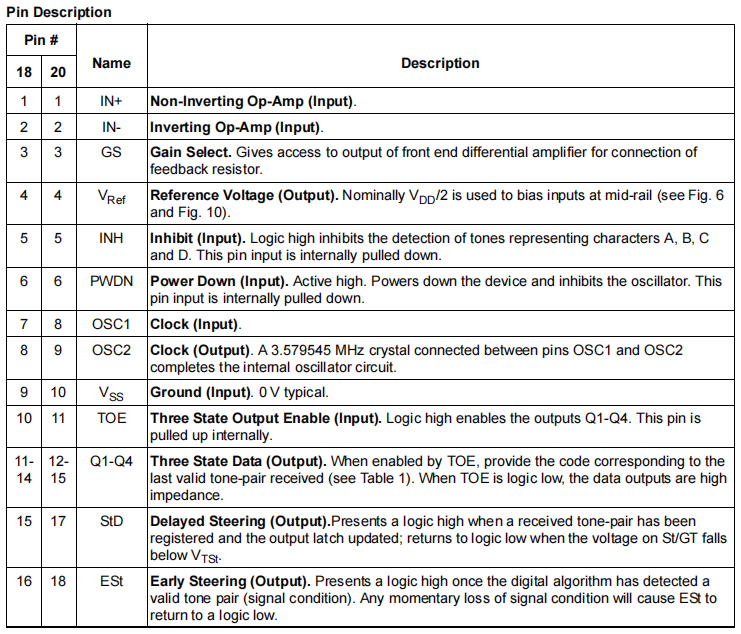

MT8870 CAD Model
Symbol

Footprint

3D Model
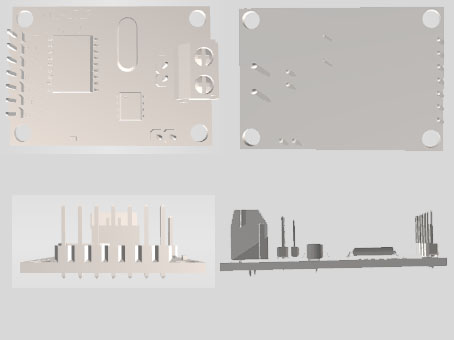
MT8870 Features
●Power Input: 5V Nominal (4.5V - 5.5V)
●Onboard 3.5mm jack input Facility
●MT8870 Based Frequency Decoder
●5 Channel Interface
●Detects 0-9, A-D, *, #
●LED notifier for Output state
●2.54” Pin pitch
●Board Dimension: 37 x 25 x 12 mm (l x w x h
●Complete DTMF Receiver
●Low power consumption
●Internal gain setting amplifier
●Adjustable guard time
●Central office quality
●Power-down mode
●Inhibit mode
●Backward compatible with MT8870C/MT8870C-1
Specifications
- TypeParameter
- Lifecycle Status
Lifecycle Status refers to the current stage of an electronic component in its product life cycle, indicating whether it is active, obsolete, or transitioning between these states. An active status means the component is in production and available for purchase. An obsolete status indicates that the component is no longer being manufactured or supported, and manufacturers typically provide a limited time frame for support. Understanding the lifecycle status is crucial for design engineers to ensure continuity and reliability in their projects.
IN PRODUCTION (Last Updated: 1 month ago) - Factory Lead Time8 Weeks
- Mount
In electronic components, the term "Mount" typically refers to the method or process of physically attaching or fixing a component onto a circuit board or other electronic device. This can involve soldering, adhesive bonding, or other techniques to secure the component in place. The mounting process is crucial for ensuring proper electrical connections and mechanical stability within the electronic system. Different components may have specific mounting requirements based on their size, shape, and function, and manufacturers provide guidelines for proper mounting procedures to ensure optimal performance and reliability of the electronic device.
Surface Mount - Mounting Type
The "Mounting Type" in electronic components refers to the method used to attach or connect a component to a circuit board or other substrate, such as through-hole, surface-mount, or panel mount.
Surface Mount - Package / Case
refers to the protective housing that encases an electronic component, providing mechanical support, electrical connections, and thermal management.
18-SOIC (0.295, 7.50mm Width) - Number of Pins18
- Operating Temperature
The operating temperature is the range of ambient temperature within which a power supply, or any other electrical equipment, operate in. This ranges from a minimum operating temperature, to a peak or maximum operating temperature, outside which, the power supply may fail.
-40°C~85°C - Packaging
Semiconductor package is a carrier / shell used to contain and cover one or more semiconductor components or integrated circuits. The material of the shell can be metal, plastic, glass or ceramic.
Tube - JESD-609 Code
The "JESD-609 Code" in electronic components refers to a standardized marking code that indicates the lead-free solder composition and finish of electronic components for compliance with environmental regulations.
e3 - Pbfree Code
The "Pbfree Code" parameter in electronic components refers to the code or marking used to indicate that the component is lead-free. Lead (Pb) is a toxic substance that has been widely used in electronic components for many years, but due to environmental concerns, there has been a shift towards lead-free alternatives. The Pbfree Code helps manufacturers and users easily identify components that do not contain lead, ensuring compliance with regulations and promoting environmentally friendly practices. It is important to pay attention to the Pbfree Code when selecting electronic components to ensure they meet the necessary requirements for lead-free applications.
yes - Part Status
Parts can have many statuses as they progress through the configuration, analysis, review, and approval stages.
Active - Moisture Sensitivity Level (MSL)
Moisture Sensitivity Level (MSL) is a standardized rating that indicates the susceptibility of electronic components, particularly semiconductors, to moisture-induced damage during storage and the soldering process, defining the allowable exposure time to ambient conditions before they require special handling or baking to prevent failures
3 (168 Hours) - Number of Terminations18
- Terminal Finish
Terminal Finish refers to the surface treatment applied to the terminals or leads of electronic components to enhance their performance and longevity. It can improve solderability, corrosion resistance, and overall reliability of the connection in electronic assemblies. Common finishes include nickel, gold, and tin, each possessing distinct properties suitable for various applications. The choice of terminal finish can significantly impact the durability and effectiveness of electronic devices.
MATTE TIN - Max Power Dissipation
The maximum power that the MOSFET can dissipate continuously under the specified thermal conditions.
500mW - Voltage - Supply
Voltage - Supply refers to the range of voltage levels that an electronic component or circuit is designed to operate with. It indicates the minimum and maximum supply voltage that can be applied for the device to function properly. Providing supply voltages outside this range can lead to malfunction, damage, or reduced performance. This parameter is critical for ensuring compatibility between different components in a circuit.
4.75V~5.25V - Terminal Position
In electronic components, the term "Terminal Position" refers to the physical location of the connection points on the component where external electrical connections can be made. These connection points, known as terminals, are typically used to attach wires, leads, or other components to the main body of the electronic component. The terminal position is important for ensuring proper connectivity and functionality of the component within a circuit. It is often specified in technical datasheets or component specifications to help designers and engineers understand how to properly integrate the component into their circuit designs.
DUAL - Terminal Form
Occurring at or forming the end of a series, succession, or the like; closing; concluding.
GULL WING - Peak Reflow Temperature (Cel)
Peak Reflow Temperature (Cel) is a parameter that specifies the maximum temperature at which an electronic component can be exposed during the reflow soldering process. Reflow soldering is a common method used to attach electronic components to a circuit board. The Peak Reflow Temperature is crucial because it ensures that the component is not damaged or degraded during the soldering process. Exceeding the specified Peak Reflow Temperature can lead to issues such as component failure, reduced performance, or even permanent damage to the component. It is important for manufacturers and assemblers to adhere to the recommended Peak Reflow Temperature to ensure the reliability and functionality of the electronic components.
260 - Supply Voltage
Supply voltage refers to the electrical potential difference provided to an electronic component or circuit. It is crucial for the proper operation of devices, as it powers their functions and determines performance characteristics. The supply voltage must be within specified limits to ensure reliability and prevent damage to components. Different electronic devices have specific supply voltage requirements, which can vary widely depending on their design and intended application.
5V - Frequency
In electronic components, the parameter "Frequency" refers to the rate at which a signal oscillates or cycles within a given period of time. It is typically measured in Hertz (Hz) and represents how many times a signal completes a full cycle in one second. Frequency is a crucial aspect in electronic components as it determines the behavior and performance of various devices such as oscillators, filters, and communication systems. Understanding the frequency characteristics of components is essential for designing and analyzing electronic circuits to ensure proper functionality and compatibility with other components in a system.
3.58MHz - Time@Peak Reflow Temperature-Max (s)
Time@Peak Reflow Temperature-Max (s) refers to the maximum duration that an electronic component can be exposed to the peak reflow temperature during the soldering process, which is crucial for ensuring reliable solder joint formation without damaging the component.
30 - Function
The parameter "Function" in electronic components refers to the specific role or purpose that the component serves within an electronic circuit. It defines how the component interacts with other elements, influences the flow of electrical signals, and contributes to the overall behavior of the system. Functions can include amplification, signal processing, switching, filtering, and energy storage, among others. Understanding the function of each component is essential for designing effective and efficient electronic systems.
DTMF Receiver - Operating Supply Voltage
The voltage level by which an electrical system is designated and to which certain operating characteristics of the system are related.
5V - Power Supplies
an electronic circuit that converts the voltage of an alternating current (AC) into a direct current (DC) voltage.?
5V - Number of Circuits1
- Operating Supply Current
Operating Supply Current, also known as supply current or quiescent current, is a crucial parameter in electronic components that indicates the amount of current required for the device to operate under normal conditions. It represents the current drawn by the component from the power supply while it is functioning. This parameter is important for determining the power consumption of the component and is typically specified in datasheets to help designers calculate the overall power requirements of their circuits. Understanding the operating supply current is essential for ensuring proper functionality and efficiency of electronic systems.
3mA - Nominal Supply Current
Nominal current is the same as the rated current. It is the current drawn by the motor while delivering rated mechanical output at its shaft.
3mA - Logic Function
In electronic components, the term "Logic Function" refers to the specific operation or behavior of a component based on its input signals. It describes how the component processes the input signals to produce the desired output. Logic functions are fundamental to digital circuits and are used to perform logical operations such as AND, OR, NOT, and XOR.Each electronic component, such as logic gates or flip-flops, is designed to perform a specific logic function based on its internal circuitry. By understanding the logic function of a component, engineers can design and analyze complex digital systems to ensure proper functionality and performance. Different logic functions can be combined to create more complex operations, allowing for the creation of sophisticated digital devices and systems.
Receiver - Telecom IC Type
Telecom IC Type refers to integrated circuits specifically designed for telecommunications applications. These components facilitate various functions such as signal processing, data modulation and demodulation, and communication protocol handling. They can be used in devices like mobile phones, modems, and network equipment, ensuring reliable data transmission and reception. Telecom ICs support different standards and technologies, making them essential for modern communication systems.
DTMF SIGNALING CIRCUIT - Height Seated (Max)
Height Seated (Max) is a parameter in electronic components that refers to the maximum allowable height of the component when it is properly seated or installed on a circuit board or within an enclosure. This specification is crucial for ensuring proper fit and alignment within the overall system design. Exceeding the maximum seated height can lead to mechanical interference, electrical shorts, or other issues that may impact the performance and reliability of the electronic device. Manufacturers provide this information to help designers and engineers select components that will fit within the designated space and function correctly in the intended application.
2.65mm - Width7.5mm
- Radiation Hardening
Radiation hardening is the process of making electronic components and circuits resistant to damage or malfunction caused by high levels of ionizing radiation, especially for environments in outer space (especially beyond the low Earth orbit), around nuclear reactors and particle accelerators, or during nuclear accidents or nuclear warfare.
No - RoHS Status
RoHS means “Restriction of Certain Hazardous Substances” in the “Hazardous Substances Directive” in electrical and electronic equipment.
ROHS3 Compliant
MT8870 Functional Block Diagram
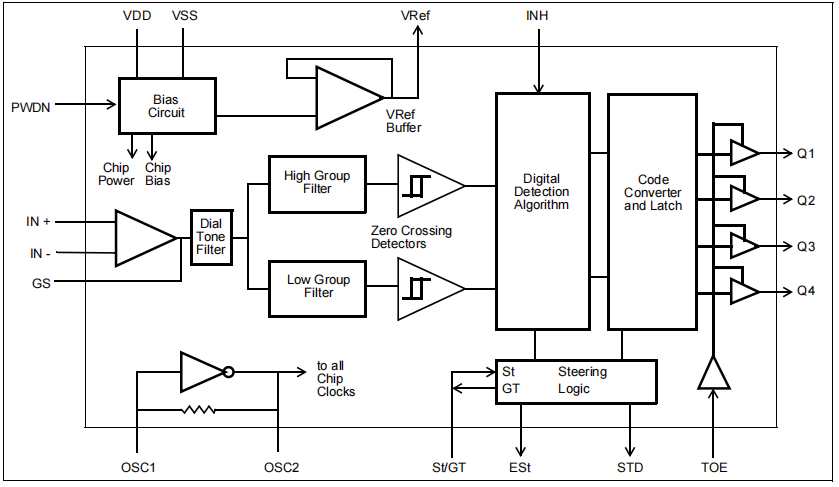
MT8870 Applications
●Wired Robot control via mobile phone keypad.
●Home Automation
●Security Systems
●Receiver system for British Telecom (BT) or CEPT Spec (MT8870D-1)
●Paging systems
●Repeater systems/mobile radio
●Credit card systems
●Remote control
●Personal computers
●Telephone answering machine
MT8870 Package
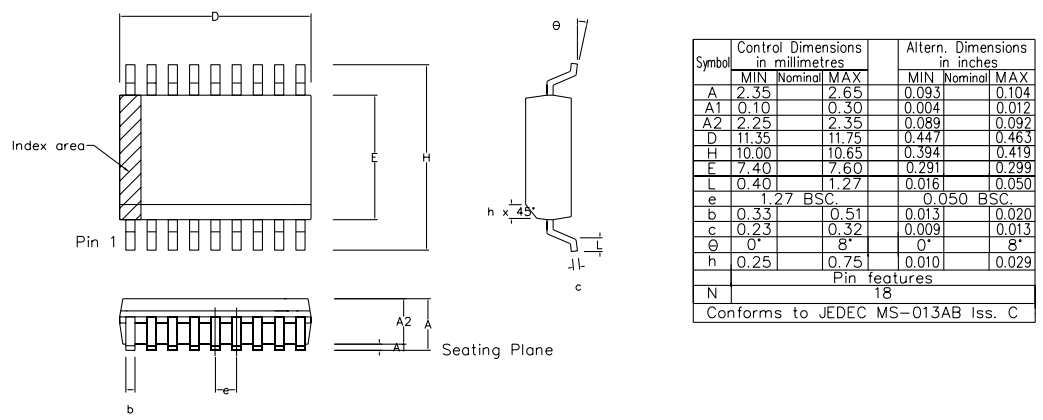
MT8870 Manufacturer
Microchip Technology Inc. is a publicly-listed American corporation that manufactures microcontroller, mixed-signal, analog and Flash-IP integrated circuits. Its products include microcontrollers (PIC, dsPIC, AVR and SAM), Serial EEPROM devices, Serial SRAM devices, embedded security devices, radio frequency (RF) devices, thermal, power and battery management analog devices, as well as linear, interface and wireless products. Its corporate headquarters is located in Chandler, Arizona.
Datasheet PDF
- PCN Other :
- PCN Design/Specification :
- PCN Packaging :
- Datasheets :
1.Can't find the DTMF signal decoder MT8870 in PROTUES, how to add this chip?
You can make this chip by yourself in the software, and you can enter it into the software library through software packaging, but you'd better know some of the chip's parameters, otherwise it cannot be simulated.
2.Can MT8870 use 3.3v?
If it is 5V, 3.3V is not allowed. Because at 3.3V, some chips may not work properly. Even if it works normally during the test, the high temperature and low temperature environment may become abnormal.
3.What role does MT8870 play in smart homes?
At the main control station or sub-control station, all control signals are DTMF encoded and then sent out; at the monitoring point, the decoder decodes the DTMF received and performs corresponding control actions according to the decoded content. According to the above requirements, a decoder based on the dedicated DTMF decoding integrated circuit MT8870 is designed.
 A Comprehensive Guide to LTC7810ILXE#PBF Dual Switching Controller
A Comprehensive Guide to LTC7810ILXE#PBF Dual Switching Controller06 March 2024152
![LM324 Quad OP-AMP IC[FAQ+Video]: Datasheet, LM324 vs LM358, and Pinout](https://res.utmel.com/Images/Article/2e9bb7df-c9ab-4d8f-8e8d-fbf5e8ad622e.jpg) LM324 Quad OP-AMP IC[FAQ+Video]: Datasheet, LM324 vs LM358, and Pinout
LM324 Quad OP-AMP IC[FAQ+Video]: Datasheet, LM324 vs LM358, and Pinout06 May 202215209
 CC2640R2FRGZR:Wireless Microcontroller, Bluetooth® 5.1 Low Energy, CC2640R2F VS. CC2640R2L
CC2640R2FRGZR:Wireless Microcontroller, Bluetooth® 5.1 Low Energy, CC2640R2F VS. CC2640R2L03 March 20221911
 TLV320AIC3104IRHBR Audio Codec: Pinout, Datasheet, and Alternatives
TLV320AIC3104IRHBR Audio Codec: Pinout, Datasheet, and Alternatives25 March 20221091
 STM32F56x/76x: Comprehensive Technical Overview
STM32F56x/76x: Comprehensive Technical Overview29 February 2024171
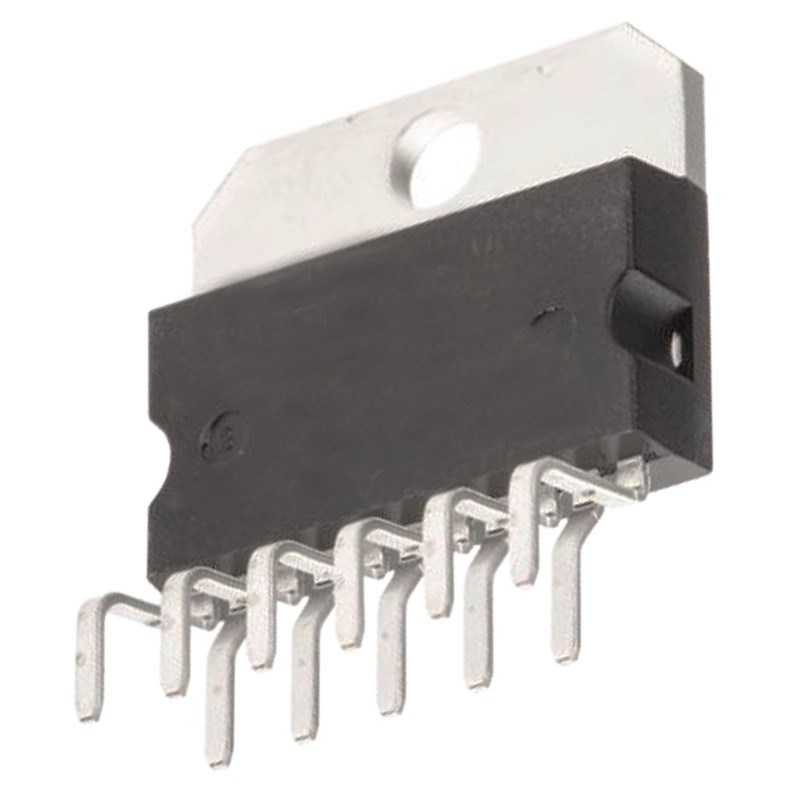 TDA7265 Audio Amplifier: Pinout, Datasheet, and Application Circuits
TDA7265 Audio Amplifier: Pinout, Datasheet, and Application Circuits21 July 202120002
 OP177 Operational Amplifiers: Pinout, Features and Datasheet
OP177 Operational Amplifiers: Pinout, Features and Datasheet16 August 20244787
 BC108 Transistor: Pinout, Datasheet, and Equivalent
BC108 Transistor: Pinout, Datasheet, and Equivalent20 November 202112660
 Comparison of Advantages and Disadvantages of Common Switch Mode Power Supply(SMPS)
Comparison of Advantages and Disadvantages of Common Switch Mode Power Supply(SMPS)21 January 20225970
 Is there a Limit to the Chip Process Node?
Is there a Limit to the Chip Process Node?02 November 202117344
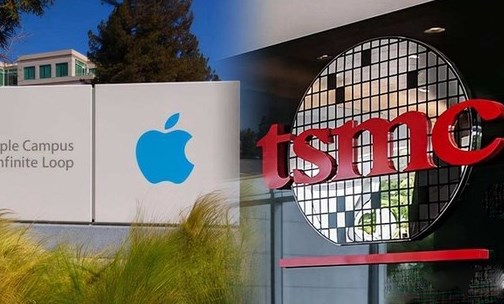 Apple Will Help TSMC to Be in the Leading Position in the Next Era
Apple Will Help TSMC to Be in the Leading Position in the Next Era16 March 20221973
 What is KVM Switch?
What is KVM Switch?05 November 20216206
 Basic Knowledge of Various Types of Mixers
Basic Knowledge of Various Types of Mixers03 January 20233743
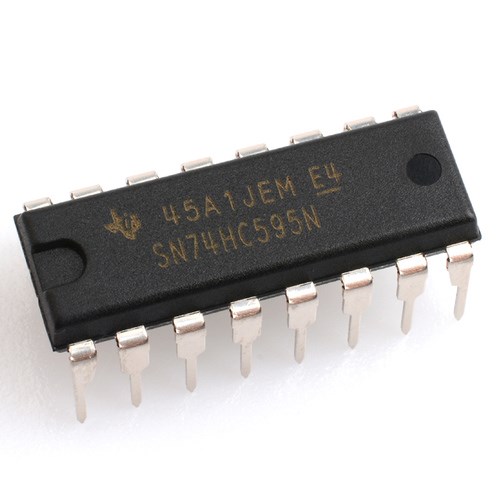 Shift Register: Classification and Working Principle
Shift Register: Classification and Working Principle26 December 202010037
 Multivibrator: Circuits, Types and Application
Multivibrator: Circuits, Types and Application08 September 202023587
 Methods for measuring the temperature of semiconductor devices
Methods for measuring the temperature of semiconductor devices14 November 20222037
Microchip Technology
In Stock: 62
United States
China
Canada
Japan
Russia
Germany
United Kingdom
Singapore
Italy
Hong Kong(China)
Taiwan(China)
France
Korea
Mexico
Netherlands
Malaysia
Austria
Spain
Switzerland
Poland
Thailand
Vietnam
India
United Arab Emirates
Afghanistan
Åland Islands
Albania
Algeria
American Samoa
Andorra
Angola
Anguilla
Antigua & Barbuda
Argentina
Armenia
Aruba
Australia
Azerbaijan
Bahamas
Bahrain
Bangladesh
Barbados
Belarus
Belgium
Belize
Benin
Bermuda
Bhutan
Bolivia
Bonaire, Sint Eustatius and Saba
Bosnia & Herzegovina
Botswana
Brazil
British Indian Ocean Territory
British Virgin Islands
Brunei
Bulgaria
Burkina Faso
Burundi
Cabo Verde
Cambodia
Cameroon
Cayman Islands
Central African Republic
Chad
Chile
Christmas Island
Cocos (Keeling) Islands
Colombia
Comoros
Congo
Congo (DRC)
Cook Islands
Costa Rica
Côte d’Ivoire
Croatia
Cuba
Curaçao
Cyprus
Czechia
Denmark
Djibouti
Dominica
Dominican Republic
Ecuador
Egypt
El Salvador
Equatorial Guinea
Eritrea
Estonia
Eswatini
Ethiopia
Falkland Islands
Faroe Islands
Fiji
Finland
French Guiana
French Polynesia
Gabon
Gambia
Georgia
Ghana
Gibraltar
Greece
Greenland
Grenada
Guadeloupe
Guam
Guatemala
Guernsey
Guinea
Guinea-Bissau
Guyana
Haiti
Honduras
Hungary
Iceland
Indonesia
Iran
Iraq
Ireland
Isle of Man
Israel
Jamaica
Jersey
Jordan
Kazakhstan
Kenya
Kiribati
Kosovo
Kuwait
Kyrgyzstan
Laos
Latvia
Lebanon
Lesotho
Liberia
Libya
Liechtenstein
Lithuania
Luxembourg
Macao(China)
Madagascar
Malawi
Maldives
Mali
Malta
Marshall Islands
Martinique
Mauritania
Mauritius
Mayotte
Micronesia
Moldova
Monaco
Mongolia
Montenegro
Montserrat
Morocco
Mozambique
Myanmar
Namibia
Nauru
Nepal
New Caledonia
New Zealand
Nicaragua
Niger
Nigeria
Niue
Norfolk Island
North Korea
North Macedonia
Northern Mariana Islands
Norway
Oman
Pakistan
Palau
Palestinian Authority
Panama
Papua New Guinea
Paraguay
Peru
Philippines
Pitcairn Islands
Portugal
Puerto Rico
Qatar
Réunion
Romania
Rwanda
Samoa
San Marino
São Tomé & Príncipe
Saudi Arabia
Senegal
Serbia
Seychelles
Sierra Leone
Sint Maarten
Slovakia
Slovenia
Solomon Islands
Somalia
South Africa
South Sudan
Sri Lanka
St Helena, Ascension, Tristan da Cunha
St. Barthélemy
St. Kitts & Nevis
St. Lucia
St. Martin
St. Pierre & Miquelon
St. Vincent & Grenadines
Sudan
Suriname
Svalbard & Jan Mayen
Sweden
Syria
Tajikistan
Tanzania
Timor-Leste
Togo
Tokelau
Tonga
Trinidad & Tobago
Tunisia
Turkey
Turkmenistan
Turks & Caicos Islands
Tuvalu
U.S. Outlying Islands
U.S. Virgin Islands
Uganda
Ukraine
Uruguay
Uzbekistan
Vanuatu
Vatican City
Venezuela
Wallis & Futuna
Yemen
Zambia
Zimbabwe
















